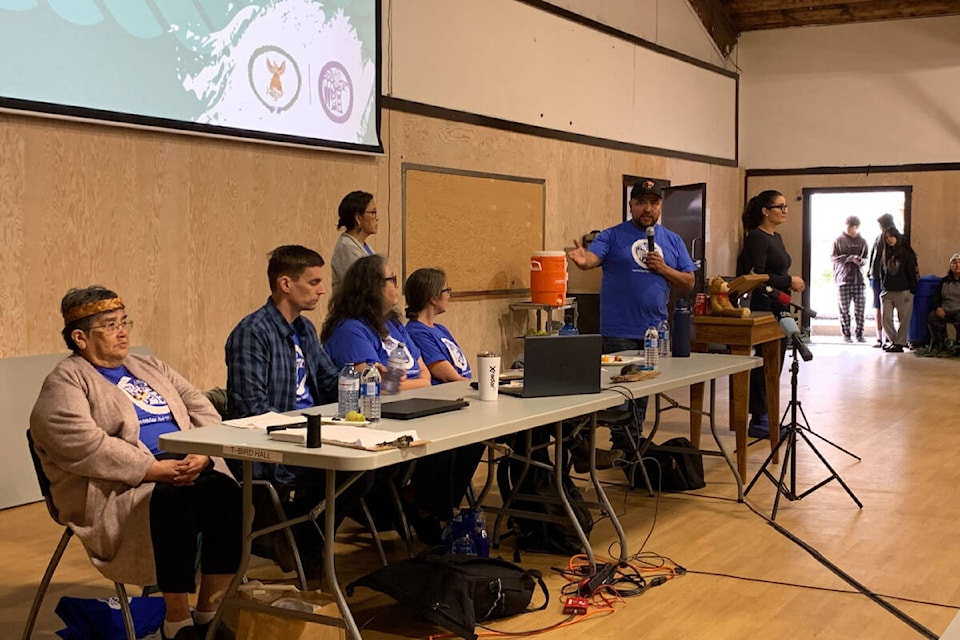Warning: The details in this story may be triggering
Ahousaht First Nation says there are likely and potential unmarked graves at two former residential school sites, as well as at the Ahousaht cemetery.
The findings are from phase one of a project that used archaeological and archival research, scanning technology and oral histories to search for missing children who attended two residential schools in the Ahousaht First Nation territory. The information gathered so far was shared with former students, families and the public on Wednesday (April 10).
Ahousaht First Nation chose not to offer figures regarding the number of potential marked graves.
“It was a difficult decision, but one that was made as a team. It is important to remember that each figure is a child and Ahousaht First Nation would like to honour those children and their families,” notes a release from the Nation.
The project has been ongoing for the last three years and has several mandates, including identifying as many children as possible by name, finding where they went when they were taken from their families, uncovering who is missing from research and using the information as a catalyst for healing.
Ahousaht elected councillor Angus Campbell called those who had to attended the institutions warriors and said their courage has strengthened his community.
“Despite the reign of the residential schools, we are still here. Today, we share the stories and shared experiences of those who survived residential school so future generations will know about what happened here,” Campbell said in the release.
Fieldwork and scanning at the residential schools and the cemetery identified clusters of unknown features that merit further research, the Nation said. The project team also looked at thousands of documents, but noted that hard work was also met with difficulty in accessing complete records, documents being in poor condition and students being referred to as numbers instead of their names.
The next phase of the Honouring our Ancient Ones project will include more scanning, further research and increasing the community-driven nature of the work. The project team noted the intergenerational trauma felt by those today is due to the devastating legacy of the institutions that were run by the federal government and religious organizations, so it called on those groups to provide resources to support the work.
Project manager Anne Atleo said their focus is on finding evidence to support the truth of the former students that attended the Christie Indian and Ahousaht Indian residential schools.
“There were many broken hearts and broken spirits. But our ancestors persevered. They survived residential school and it’s important we acknowledge their truths and identify missing children,” Atleo said.
The Catholic Church-run Christie Indian Residential School was located on Won a chus (Meares Island). After opening in 1900, overcrowding was common throughout its 83-year history, according to the National Centre for Truth and Reconciliation. The centre’s records show six children died of tubercular meningitis during a three-year stretch around 1940, and a worker sexually abused a student over several years in the 1950s.
The Ahousaht Indian Residential School was located near Maaqutusiis, a village on the southeastern tip of Flores Island that’s about a half-hour boat ride north of Tofino.
Originally a Presbyterian-run day school, it received federal government funding starting in 1904 before being taken over by the United Church in 1925. An inspector’s report from 1936 noted that every staff member carried a strap and that the children “never learned to work without punishment,” according to the Truth and Reconciliation centre.
The school was destroyed by a fire in 1940 and it was replaced with United Church day school that opened in June of that year.
Supports are available at the Indian Residential School Survivors Society (IRSSS) at 1-800-721-0066.
READ: Monument for residential school children arrives at Canadian Museum of History
